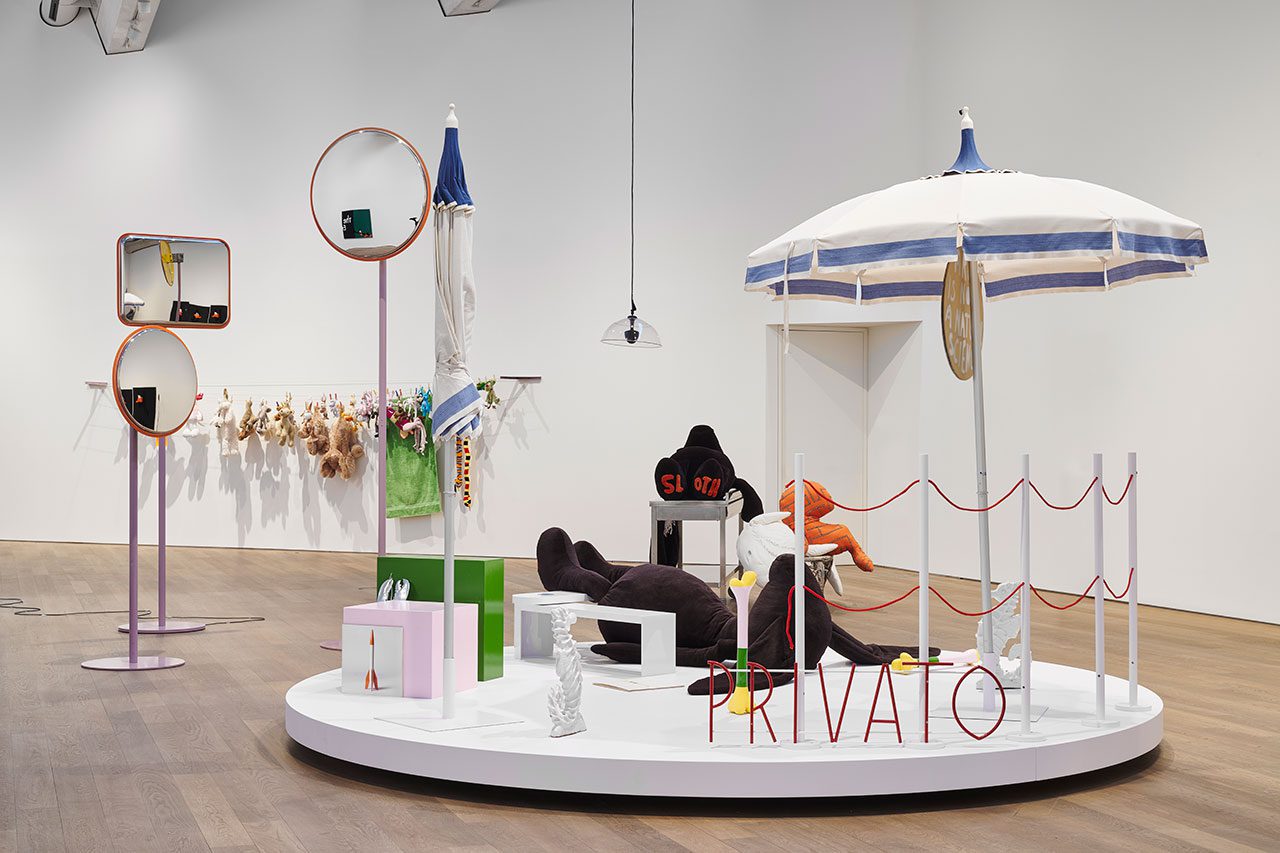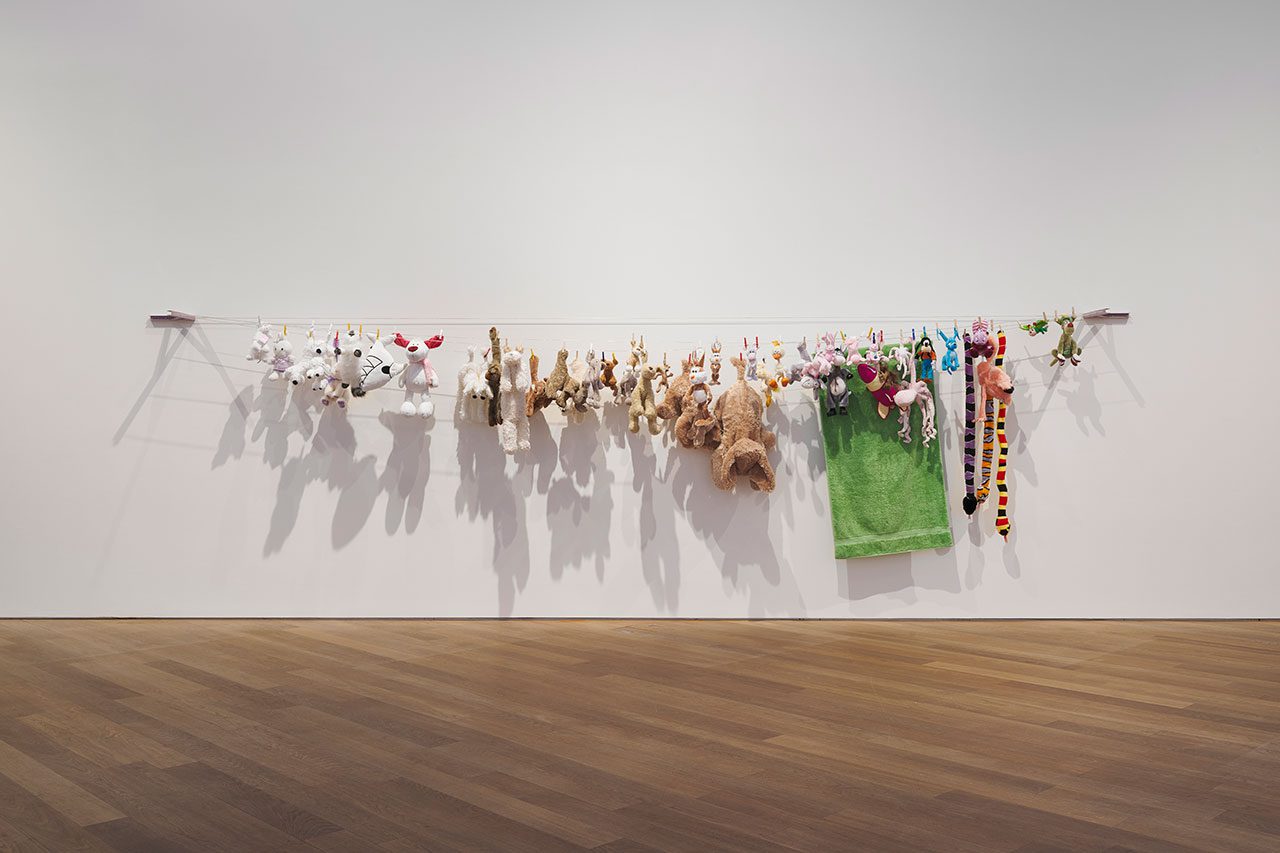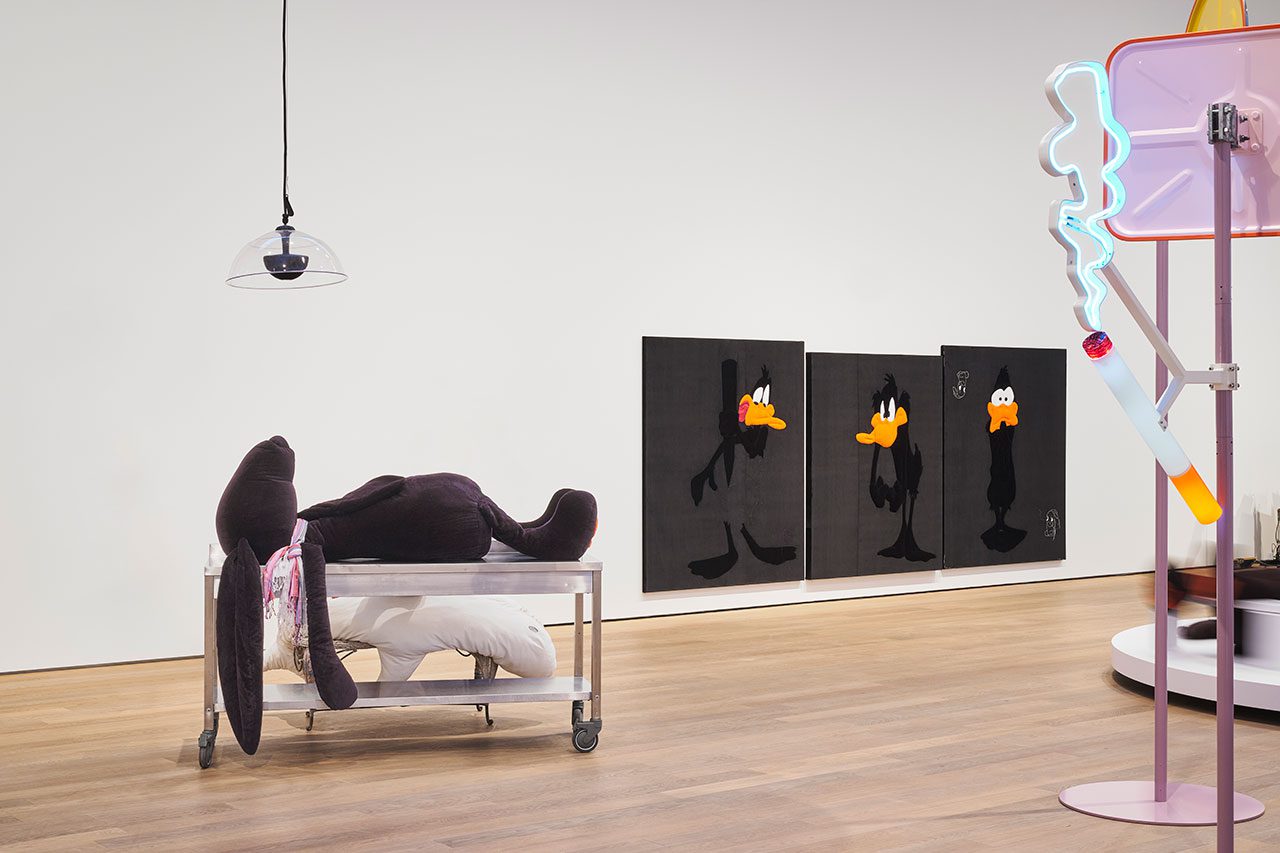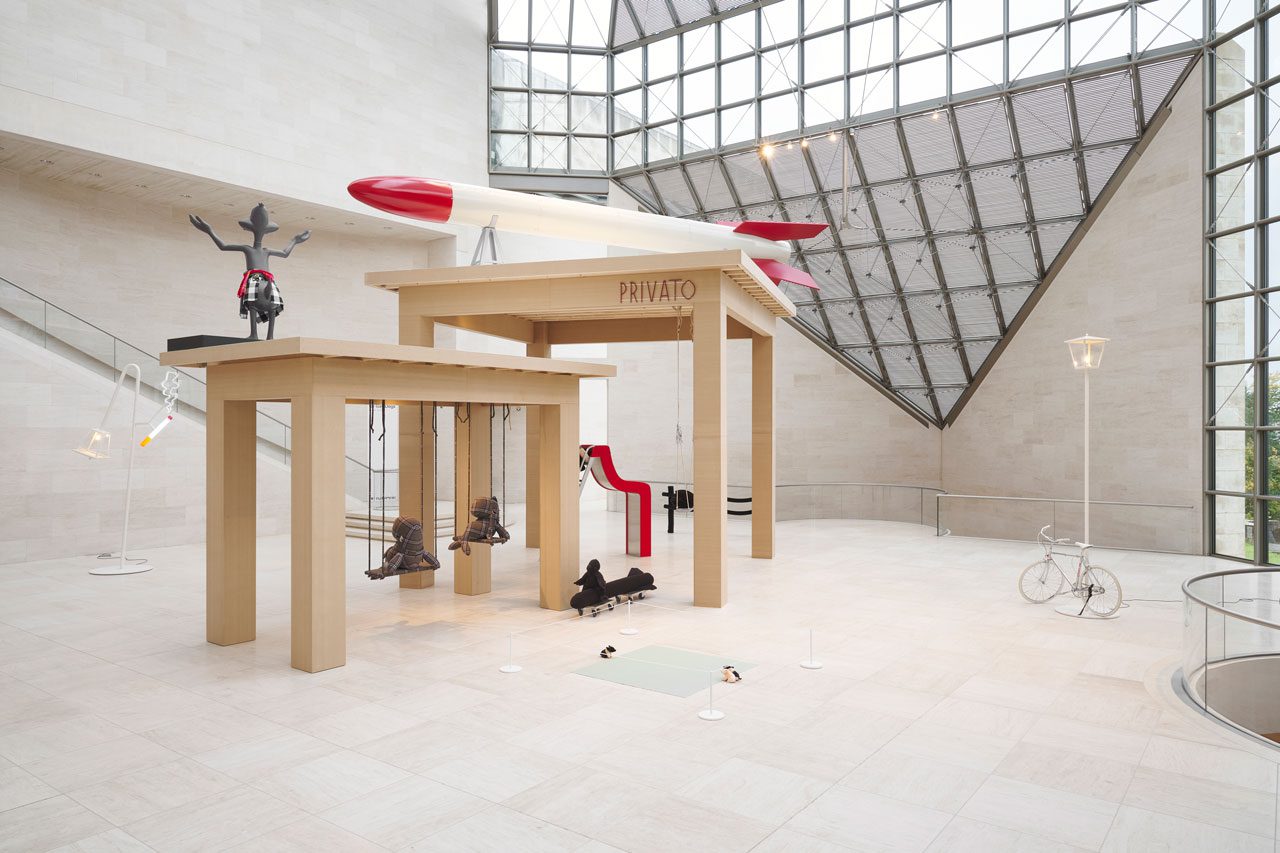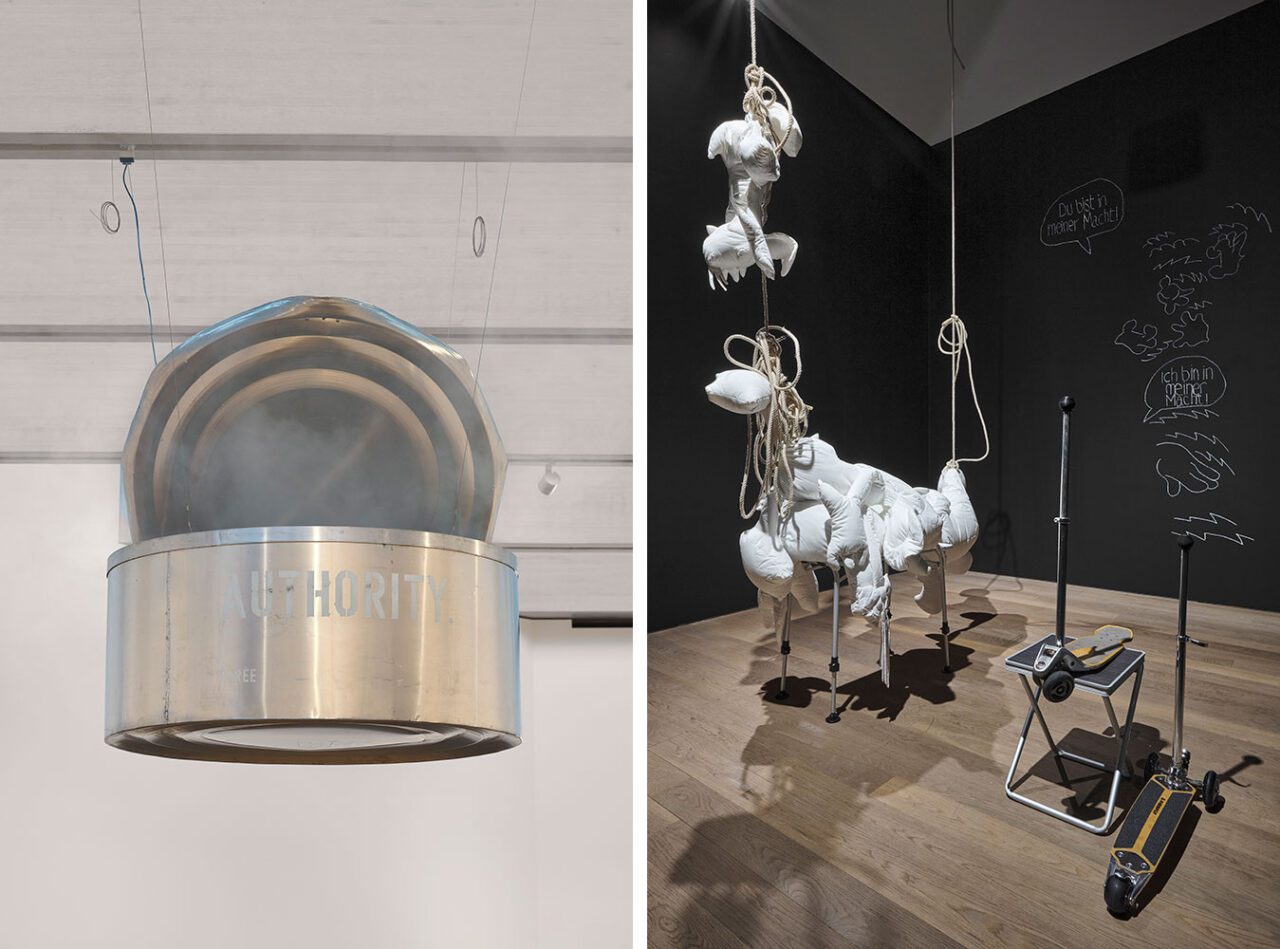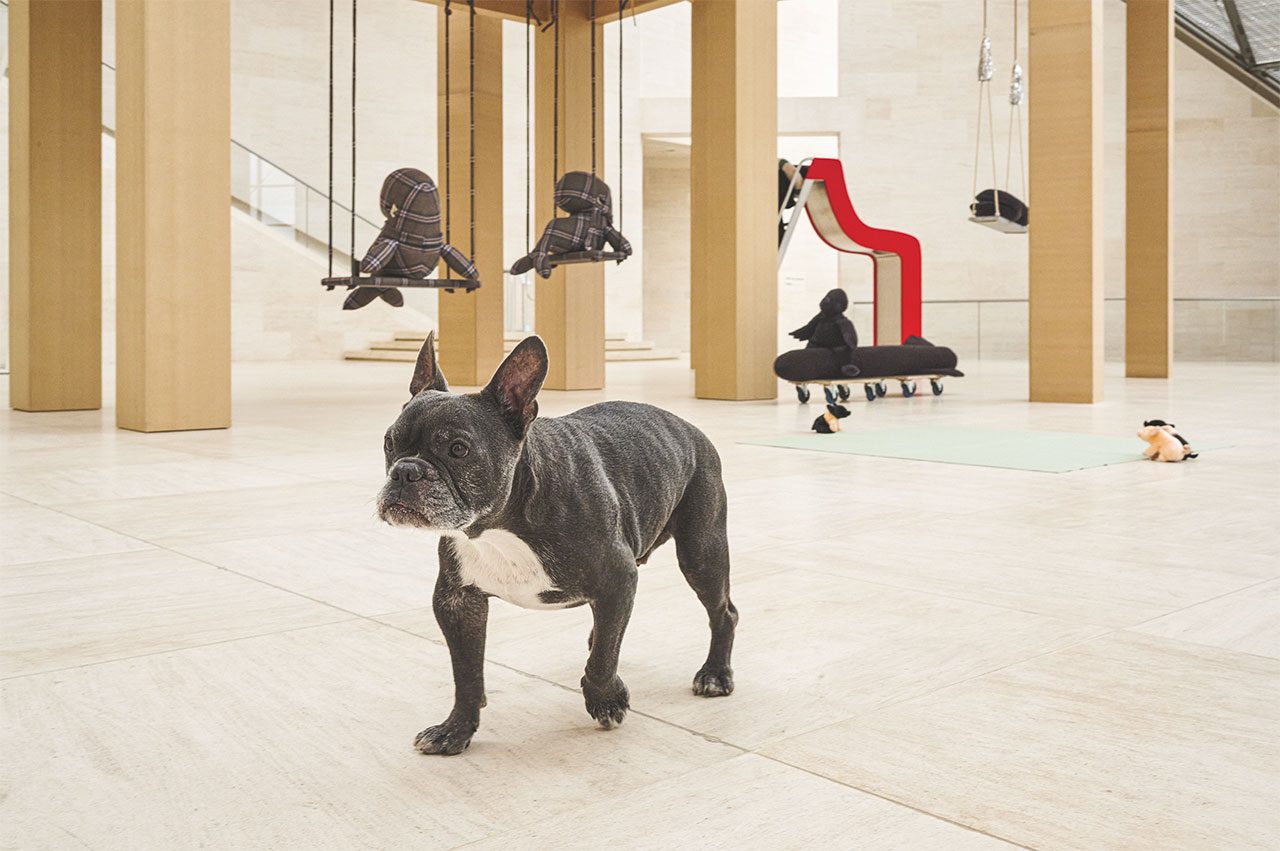PRESENTATION: Cosima von Bonin-Songs for Gay Dogs
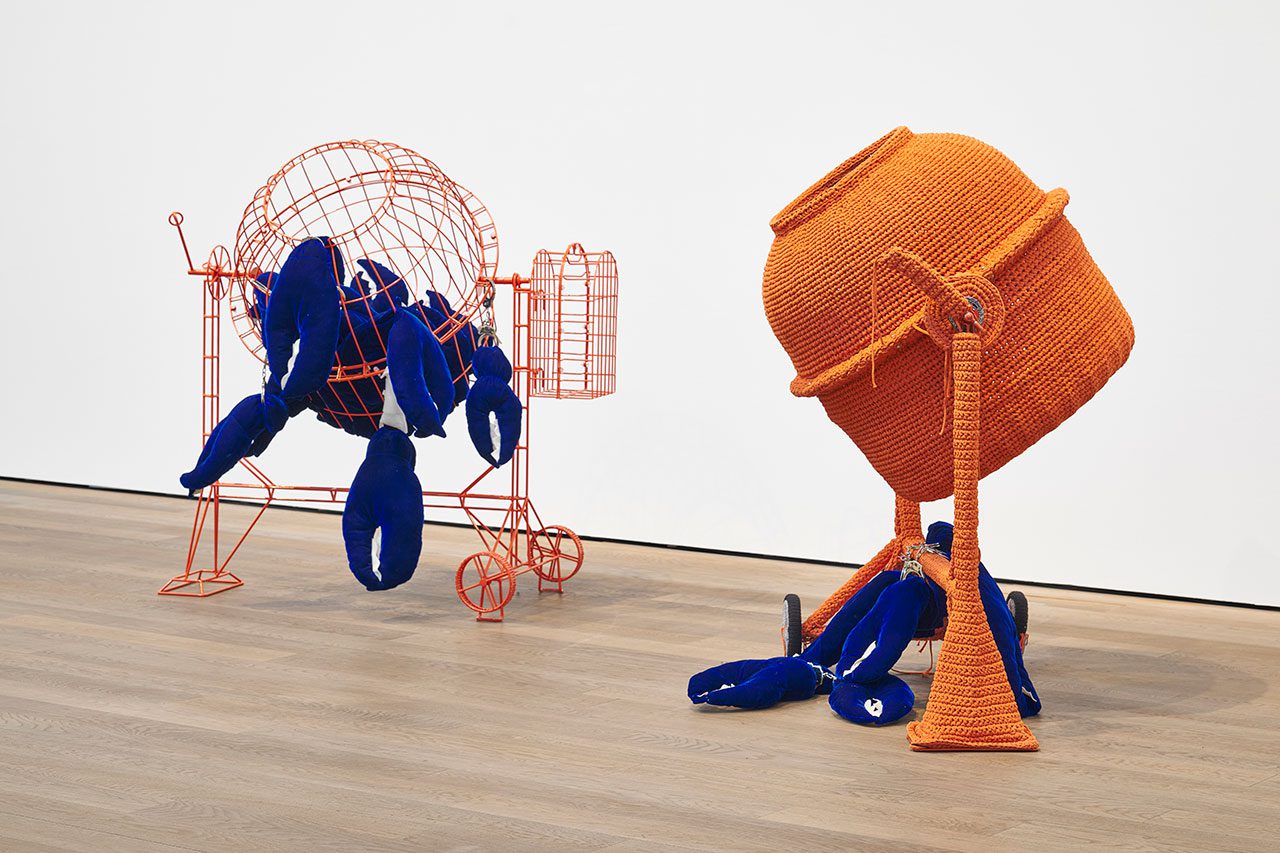 Cosima von Bonin creates transformations of the everyday. For her expansive exhibitions she draws on numerous references from popular culture as well as from film, fashion, music, and art. Evoking exhausted cuddly toys, soft fences, rockets, or cartoon figures like Daffy Duck and Bambi—Bonin combines a variety of protagonists to form an ensemble, a community of social connections. Her artistic strategies comprise alienation, appropriation, cooperation, and delegation.
Cosima von Bonin creates transformations of the everyday. For her expansive exhibitions she draws on numerous references from popular culture as well as from film, fashion, music, and art. Evoking exhausted cuddly toys, soft fences, rockets, or cartoon figures like Daffy Duck and Bambi—Bonin combines a variety of protagonists to form an ensemble, a community of social connections. Her artistic strategies comprise alienation, appropriation, cooperation, and delegation.
By Dimitris Lempesis
Photo: Mudam Archive
Populated by cartoon and animal characters, “Songs for Gay Dogs” is an extensive monographic exhibition by Cosima von Bonin that sheds light on the artist’s recent creations. The exhibition presents works produced over the past ten years, alongside new commissions and some well-known works. The exhibition is composed of a series of scenes; a playful journey through the motifs that have defined the artist’s practice over the last decade. The scenes staged by the exhibition involve familiar characters pulled from the world of animation, comic strips or simply from under the sea. These characters, who first appeared in her work in the early 2000s, are the artist’s entourage – joining the long list of Cosima von Bonin’s human and non- human collaborators. Cult figures such as Daffy Duck and Bambi take part in the exhibition, alongside unidentified fish, whales, scallops, rabbits, sharks and pigs. For Mudam’s Grand Hall, Cosima von Bonin has conceived a site-specific installation made of giant tables that serve as platforms and shelters for a selection of newly produced and older works. By oversizing an object of our daily life, the artist alters our perception of space, offering different perspectives on I.M. Pei’s grandiose architecture as well as on her own practice. This commission is an example of Cosima von Bonin’s playful ability to appeal as much to the open-mindedness attributed to children as to the criticality of mature minds. On the first floor, the corridor is filled with rockets of different sizes and colors that resemble giant toys. In the East Gallery, a council involving several fish and sharks in a circle unfolds in a hazy, almost meditative atmosphere. This recent body of work entitled “What if it barks” (2018), exhibited for the first time in Europe, invokes the marine world to question our relationship with the unknown and the human desire for domination. Some of the artist’s most iconic works, such as one of her giant “bikinis” (Untitled (Bikini Loop # 2), 1994/2007), are presented alongside. The West Gallery and adjacent Small West Gallery house some of the artist’s most recent works, starring famous Disney and Looney Tunes characters. These hide secrets and lies, revealing the dark side of the spectacle society. A series of black velvet panels shows Daffy Duck in various situations, like sequences extracted from an animation film. Rockets grow like mushrooms in Cosima von Bonin’s oeuvre. Soft or hard, laying down or standing up, they are red, pink, purple, sometimes patterned. Despite representing a deadly weapon, a symbol of war and aggression, their bright and glossy colors make them look rather harmless. “Miss Riley” – the title of the rocket lying on one of the tables in the Grand Hall, pointing at visitors as they enter the museum – refers to a character in Homer Hickam’s autobiography and the film that resulted from it, “October Sky” (1999). Miss Riley was a young American chemistry teacher who, during the Cold War, pushed the young boy from a modest background to study and team up with some classmates to build rockets, later leading him to take on high responsibilities in the US military and at NASA. The massive, impotent missile that bears her name seems to question the ‘American dream’ success story. The titles of the smaller rockets on the first floor are all variations of Loser, giving another hint of the artist’s critical view of the ideals of militarization and domination that have prevailed in Western history and which have traditionally resulted in the erection of sculptures and statues celebrating the men and objects that have sustained those endeavors. Streetlights and smoke signs – sometimes combined – are spread across the exhibition. These pieces are older and iconic works in Cosima von Bonin’s oeuvre. The streetlights are a nod to a renowned series of sculptures that Martin Kippenberger started in 1988 with a work entitled “Laterne an Betrunkene”, Distorted as if seen through the eyes of a drunk, it deliberately failed to represent a common urban object. Cosima von Bonin pays homage to a poetic vision of the world that may be considered deviant. The recurrence of her smoke signs testifies to a similar endeavor: a provocative celebration, if not an incentive to question and perhaps even transgress social rules. However, as is often the case with Cosima von Bonin’s work, what appears funny at first sight hides a dark underbelly. The title of the gigantic, wonky streetlight, “Le perdant radical”, for instance, refers to a concept theorized by German author Hans Magnus Enzensberger in his analysis of loner terrorist attacks in relation to the toxic values traditionally associated with masculinity.
Created in 1937, Daffy Duck is one of the most famous Looney Tunes characters. He is depicted as a rather ‘despicable’ character (although this is Daffy’s own catchphrase), defined by his unmistakable lisp, as well as his greedy, neurotic and cowardly yet combative traits. He grew to become Bugs Bunny’s rival, opposing to the rabbit’s cool attitude his desperate hunt for fame. The anthropomorphic black duck has become a recurring figure in Cosima von Bonin’s work, to the point of creating a ‘Daffy formula’ stating that ‘to be a Daffy, a character must first and foremost be like Daffy. Not only must they be congenitally selfish, devious, grandiose and craven, but all these characteristics must be magnified to grotesque proportions due to the pointed cruelty of the universe. The sculpture “Church of Daffy” (2023) presents the famous duck as a life- size grey statue made of epoxy resin, with raised arms and a loincloth. Cosima von Bonin depicts Daffy as a Messiah whose unlimited hubris has led to preach his nebulous ideas, despite their doomed tendency to fail. According to film critic Steven Jay Schneider, Daffy ‘expresses all of the things we’re afraid to express’. The character embodies some of the ideas that drive the artist’s practice: the shameless revelation of human imperfections as well as a tireless (yet bitter) endeavour to overcome failure. Several installations and five textile panels form the recent series “Open Your Shirt Please”( 2019). The panels depict different stages of Daffy Duck desperately trying to fight against the black canvas that seems to be about to swallow him. On one of them, he tries to push ‘The End’ away; on another, he has disappeared, and darkness seems to have successfully taken over. These works, humorous at first, could allude to the fear of death and the battle against depression. They embody the paradox that characterises Cosima von Bonin’s work: existential questions that lie dormant under an apparent lightness. Depression taking the shape of exhaustion in reaction to a society that demands constant performance and optimization, is a recurrent theme in the artist’s practice. In contrast to Daffy’s combativeness, the pink pigs resting motionless, eyes closed, piled up in their cement mixer cage, or facing down on the floor, seem to have surrendered. Despite being soft, cute and wearing tiny sparkly backpacks, they are surrounded by fetish accessories such as handcuffs and plastic weapons. The artist confronts symbols of youth and innocence with objects that represent some kind of violence. The use of stuffed animals, especially in bulks, is reminiscent of works by Mike Kelley, one of Cosima von Bonin’s favorite artists. But while Kelley typically used handmade, worn-out plush toys, Cosima von Bonin’s look brand-new. They are standardized and mass-produced, showing that even childhood has long been commodified – the Looney Tunes characters are just another example. The cement mixer sculptures, made of colorful wire mesh or wrapped in a crochet cover, explore similar contrasts, evoking the harshness of an extractive industry with materials and colors that are associated with softness and femininity. The series “What if it barks” (2018) comprises an ensemble of sculptures representing sharks and fish wearing costumes and accessories. They are made out of commercial objects from the world of hospitality, such as seafood restaurants’ signs, dustbins or menu holders. These have been customized with various objects: a missile wrapped in black-and-white chequered cloth is gripped in a shark’s jaw, while a white bass guitar, an apron, belts and chains adorn a mackerel musician. They are joined by a whale made of fabric which seems to be trying to climb on a chair, on top of a small rhino designed in the 1960s by the famous German therapeutic toymaker Renate Müller. All of them are gathered around a gigantic metal can that states ‘Authority Purée’ – Authority being the name of an actual brand of pet food. White smoke rises from its open lid, creating a hazy atmosphere. The marine animals are presented in a circle, as if taking part in a spiritual ceremony whose guru would be this authoritative can of pet food. Or is it rather a moment of organization, the start of a parade for which everyone has dressed to impress? These motifs form part of a wider theme that Cosima von Bonin has variously drawn on for many years: the world of sea creatures, which are often presented like colorful children’s toys that become enigmatic anthropomorphic metaphors.
Photo: Cosima von Bonin, Songs for Gay Dogs, Exhibition view, Mudam Luxembourg 2024-25, Photo: Mareike Tocha, © & Courtesy the artist and Mudam Luxembourg
Info: Curator: Clementine Proby, Assistant Curator: Clément Minighetti, Mudam – The Contemporary Art Museum of Luxembourg, 3 Park Dräi Eechelen, Luxembourg, Luxembourg, Duration: 11/10/2024-2/3/2025, Days & Hours: Tue & Thu-Sun 10:00-18:00, Wed 10:00-21:00, www.mudam.com/
